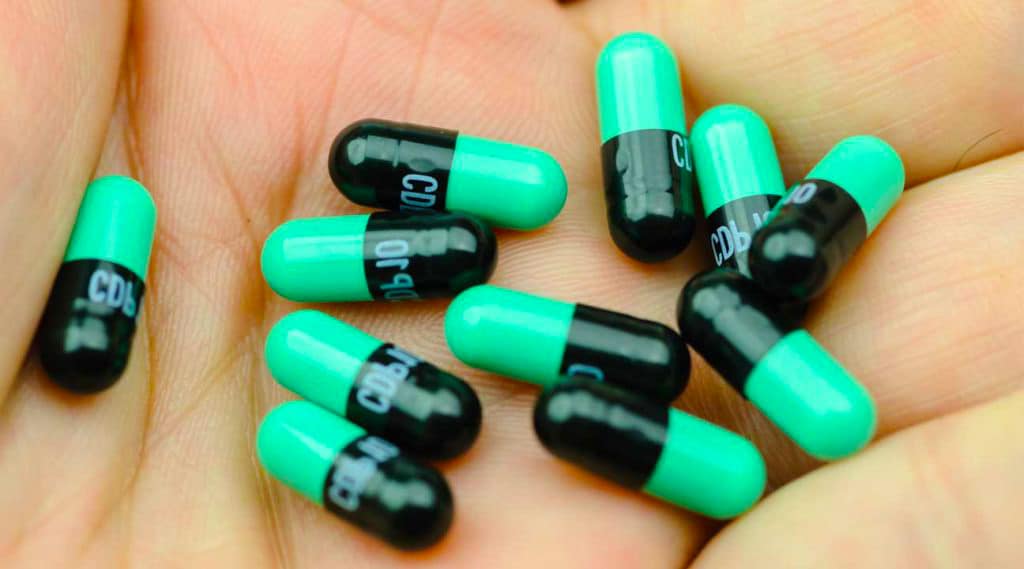What is Librium?
Pronounced as /ˈlɪbrɪəm/
Librium is a prescription drug under the benzodiazepine class which affects the central nervous system (CNS). It is used to cure anxiety and acute alcohol withdrawal by depressing or calming the brain and body. This therapeutic compound was formulated at Hoffmann-La Roche Inc and among the safer medication drug to treat mental disorders.
What does Librium look like?
This prescription drug is available in the market in capsule form with varying strengths: 5 mg, 10 mg, 25 mg. Aside from its active component, it also contains corn starch, lactose, and talc. Likewise, its capsule shell also contains methyl and propyl parabens and potassium sorbate to safely preserve the drug and give an antimicrobial effect.
Here is a summary chart for the physical form of this drug.
| Strength | Color | Shape |
| 5 mg | Yellow, Yellow Blue Green | Capsule |
| 10 mg | Yellow, Blue & Red Yellow, Blue & Green | Capsule |
| 25 mg | Yellow, Green Yellow, Blue | Capsule |
In its purest form, it is a water-soluble white crystalline compound. It’s actually unstable in solution form and highly reactive to the presence of sunlight.
What are the other names of Librium?
The brand name for this prescription drug is “Librium” while its generic or chemical name is “chlordiazepoxide hydrochloride”.
Here are other chemical names for this drug:
- Chlordiazepoxide hydrobromide
- Chlordiazepoxide monohydrochloride
- Chlordiazepoxide perchlorate
- Chlozepid
- Elenium
- Methaminodiazepoxide
Other brand names:
- A-poxide
- Chlordiazachel
- H-Tran
- Librelease
- Libritabs
- Lygen
- Mitran
- Poxi
- Librax
What are the street names?
The drug is known in the streets by different names, depending on the area or what it is mixed with.
Here are some street names:
- Blue bombs
- Nerve pills
- Tranks
- Downers
- Blues
- Ruffies
- Normies
- L
What is Librium used for?
This prescription medicine is intended for the treatment and relief of anxiety, acute alcohol withdrawal symptoms, seizures, insomnia, muscle tensions, and irritable bowel movement symptoms. Likewise, it’s also used to relieve fear before a person undergoes surgery.
Aside from its medical applications, it’s also misused and abused for recreational purposes alongside other substances such as alcohol, sedatives, antidepressants and illicit drugs such as heroin and cocaine.
How does Librium work?
This prescription drug relieves anxiety and acute alcohol withdrawal symptoms by depressing or relaxing the brain and body. Once orally ingested, this substance targets the GABA receptor sites in the central nervous system. It stimulates the inhibitory activity of the GABA receptors by opening the GABA-activated chloride pathways and allowing chloride ions to enter the neuron. As a result, the neurons become negatively charged and resistant to any stimulation. This action induces the sedative, anti-anxiety, or anti-epileptic function of these medicinal substances.
How strong is Librium?
Even though this substance is less addictive compared to Schedule III controlled substances, still, abuse and misuse of it can lead to serious adverse health effects. The minor side effects of using this drug include drowsiness, ataxia, and confusion. Whereas, the severe side effects of this drug include dermatological diseases, decreased sexual drive, changes in EEG patterns, low platelet count, hepatic dysfunction and jaundice. Further, in order to experience the maximum therapeutic effect of this benzodiazepine drug, medication must be maintained for approximately 4 months.
How long does Librium stay in your system, blood, urine, saliva, hair?
If you are to undergo a drug test, you may be wondering how long this drug stays in your system.
- Blood test: 6-48 hours
- Urine test: 1-6 weeks
- Saliva test: 1-10 days
- Hair test: up to 90 days
How does one get addicted to Librium?
There are two main reasons for Librium addiction: (1) tolerance from the drug and (2) intentional misuse and abuse for recreational purposes. The sole use of these prescription drugs for intentional abuse and addiction is rare because they usually combine it with other substances to increase the effect. Likewise, taking in more than what is prescribed can seriously lead to tolerance and addiction to this drug.
How does Librium use affect the brain and the body?
This medication relaxes the brain and body by stimulating the secretion of the GABA neurotransmitter which inhibits neural activity. Abuse of this substance can lead to some side effects such as sleepiness, nausea, headache, bleary eyes, and constipation.
What are the short and long-term effects of Librium?
Aside from the calming or depressing effect of this medicine, there are other short-term and long-term effects associated with the use of this drug.
Short-term effects:
- Relaxed body
- Drowsiness
- Anxiety relief
Long-term effects:
- Dementia or gradual brain dysfunction
- Apathy
- Suicidal behavior
- Inability to focus
- Depression
- Irritability
- Headache
- Gastrointestinal pains
- Liver failure
- Uncontrolled body movements
Why is Librium dangerous?
This prescription drug is dangerous because it’s readily available and poses a high degree of misuse and abuse when combined with other substances such as alcohol, sedatives, antidepressants, and illicit drugs like heroin and cocaine. Some of the severe health damages from the abuse of this drug include verbal dysfunction, seizures, extreme sleepiness, hypotension, difficult breathing, and extreme muscle weakness.
A continued high-dosage intake of this drug can increase the risk of developing dementia, which is a mental illness resulting in gradual memory loss and decreased brain functionality.
What causes Librium overdose?
An overdose of this prescription drug happens when a person intakes more than what has been prescribed by the clinician in order to reach fast results. Further, people tend to overdose on this drug when it is combined with other substances in order to magnify its effect.
What are the signs of overdose?
Here are some of the evident signs and symptoms of overdose.
- Short breaths
- Bleary vision
- Irregular heartbeat
- Disorientation
- Gradual memory loss
- Stomach cramps
- Nausea
How do you treat Librium overdose?
Some factors that affect the intensity of the overdose include present health status, the presence of other substances used alongside, and the duration of overdose.
Below are some of the treatments you can apply to alleviate overdose.
- Periodic monitoring of vital signs
- Administration of intravenous fluids
- Low blood pressure can be medicated using levarterenol or metaraminol
- Ensure sufficient breathing of the patient
- Washing out of the stomach
- Let the patient ingest activated charcoal to absorb some of the substances inside the body.
- The patient can take flumazenil or romazicon to counteract the effect of the prescription drug.
What are the withdrawal symptoms from Librium?
Withdrawal symptoms may occur after a few hours the drug is last taken. These symptoms may last for a week but some may continue to experience symptoms after a few months.
Withdrawal symptoms may include:
- Difficulty in sleeping
- Muscle pains
- Rapid breathing action
- Loss of appetite
- extreme weight loss
- excessive sweating
- Irritability
- inability to focus
- frequent headaches
How can you treat Librium addiction?
Abuse of this drug is treatable. Treatment must be done step-by-step for complete recovery. You can consider the following steps for your treatment process:
- Consult your medical personnel or clinician for a comprehensive guideline in order to recover from drug dependence.
- Below are some of the drug medications to treat substance addiction:
o Flumazenil: This counteracts the effects of most benzodiazepine substances.
o Activated charcoal: It’s used to absorb some of the amounts of the drug inside the body.
o Phenobarbital: This drug is under the class known as “barbiturates”. It is used to minimize seizures and anxiety.
o Buspirone (Buspar): It is an anxiolytic drug for it stimulates the production of serotonin in the brain.
o Tegretol (Carbamazepine): This calms the brain and reduces anxiety.
o Tofranil (Imipramine): This drug is under the tricyclic antidepressant group. It is used to cure depression and anxiety as a result of the addiction. - Reward System: A contingency management plan where sets of rewards will be given to the patients who avoid using this substance.
- Cognitive Behavioral Therapy (CBT): A treatment process seeking to determine the variables causing drug abuse, risk reduction methods, and enhancing coping mechanism.
- Recovery Group: A community-based plan which allows the patient to meet other victims and have a sharing about their experiences and success.





